
The Scapular of Our Lady of Mount Carmel belongs to the habit of both the Carmelite Order and the Discalced Carmelite Order, both of which have Our Lady of Mount Carmel as their patroness. In its small form, it is widely popular within the Latin Church of the Catholic Church as a religious article and has probably served as the prototype of all the other devotional scapulars. The liturgical feast day of Our Lady of Mount Carmel, July 16, is popularly associated with the devotion of the Scapular.
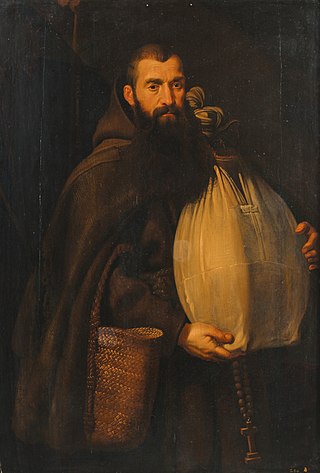
Felix of Cantalice, OFMCap was an Italian Capuchin friar of the 16th century. Canonized by Pope Clement XI in 1712, he was the first Capuchin friar to be named a saint. He worked as a shepherd and farmhand until he was twenty-eight. His task as a Capuchin was to beg alms for the friars. So successful was he that Brother Felix was able to extend his collections to assist the poor.

There are a number of Roman Catholic religious orders or congregations with Immaculate Conception in their name. Several of them are discussed here.

The Congregation of Marian Fathers of the Immaculate Conception of the Most Blessed Virgin Mary is a Catholic male clerical religious congregation founded, 1670, in Poland. It is also known as Marians of the Immaculate Conception. Its members add the post-nominal letters M.I.C. after their names to indicate membership in the Congregation.
The Third Order of Saint Francis is a third order in the Franciscan tradition of Christianity, founded by the medieval Italian Catholic friar Francis of Assisi.
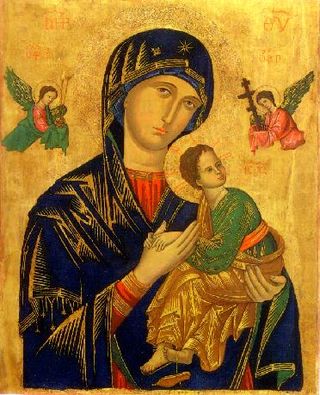
A patronage of the Blessed Virgin Mary is a form of spiritual protection attributed to Mary, mother of Jesus, in favor of some occupations, activities, religious orders, congregations, dioceses, and geographic locations.

Our Lady of the Scapular Parish is a Roman Catholic personal parish that specifically ministers to Polish immigrants and those of Polish descent. Our Lady of the Scapular Parish was established on August 1, 2013, as a result from a merger of Our Lady of Mount Carmel Parish (1899–2013) and St. Stanislaus Kostka Parish (1914–2013). The activities of the parish are located at Our Lady of Mount Carmel Catholic Church in Wyandotte, Michigan, Wayne County, United States.
This article lists the feast days of the General Roman Calendar as approved on 25 July 1960 by Pope John XXIII's motu proprioRubricarum instructum and promulgated by the Sacred Congregation of Rites the following day, 26 July 1960, by the decree Novum rubricarum. This 1960 calendar was incorporated into the 1962 edition of the Roman Missal, continued use of which Pope Benedict XVI authorized in his 7 July 2007 motu proprio Summorum Pontificum, and which Pope Francis updated in his 16 July 2021 motu proprio Traditionis custodes, for use as a Traditional Roman Mass.

Catholic Marian movements and societies have developed from the veneration of the Blessed Virgin Mary by members of the Catholic Church. These societies form part of the fabric of Mariology in the Catholic Church. Popular membership in Marian organizations grew significantly in the 20th century, as apparitions such as Our Lady of Fátima gave rise to societies with millions of members, and today many Marian societies exist around the world. This article reviews the major Marian movements and organizations.
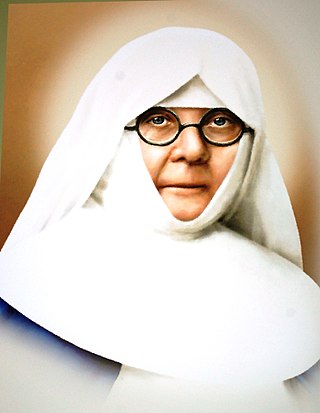
Marcelina Darowska was a Polish religious sister who was beatified by Pope John Paul II in 1996. She was inspired to co-found the Sisters of the Immaculate Conception of the Blessed Virgin Mary, a congregation in Poland, Belarus and the Ukraine.
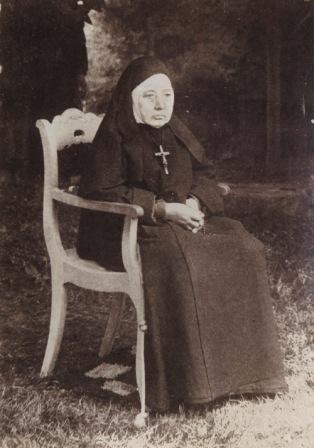
Angela Truszkowska was a Polish nun who has been beatified by the Roman Catholic Church. Foundress of the Felician Sisters, she forged one of the first active-contemplative communities that, nearly a century and a half later, would grow to include more than 1,800 vowed Sisters over four continents serving in an array of ministries.

Edmund Bojanowski was a Polish Roman Catholic and the founder of four separate religious congregations. He studied art and literature during his education in Breslau and Berlin before distinguishing himself during a cholera epidemic in which he tended to the ill. Bojanowski founded several orphanages and libraries for the poor and even worked in them to provide for those people. But his main desire was to enter the priesthood: ill health blocked this once and his own death prevented his second attempt after his deteriorating health forced him to stop his ecclesial studies.
Catholic sisters and nuns in the United States have played a major role in American religion, education, nursing and social work since the early 19th century. In Catholic Europe, convents were heavily endowed over the centuries, and were sponsored by the aristocracy. Religious orders were founded by entrepreneurial women who saw a need and an opportunity, and were staffed by devout women from poor families. The number of Catholic nuns grew exponentially from about 900 in the year 1840, to a maximum of nearly 200,000 in 1965, falling to 56,000 in 2010. According to an article posted on CatholicPhilly.com, the website of the Archdiocese of Philadelphia, Pennsylvania, in October 2018, National Religious Retirement Office statistics showed that number as 47,160 in 2016, adding that “about 77 percent of women religious are older than 70.” In March 2022, the NRRO was reporting statistics from 2018, citing the number of professed sisters as 45,100. The network of Catholic institutions provided high status lifetime careers as nuns in parochial schools, hospitals, and orphanages. They were part of an international Catholic network, with considerable movement back and forth from Britain, France, Germany and Canada.

Honorat Koźmiński, born Florentyn Wacław Jan Stefan Koźmiński, was a Polish priest and professed member from the Order of Friars Minor Capuchin who went on to establish sixteen religious congregations. He was a teacher before reinvigorating clandestine religious orders that the Russian Empire had suppressed during their occupation of Poland. He collaborated with a number of individuals in this venture and he publicised the Third Order of Saint Francis to people.
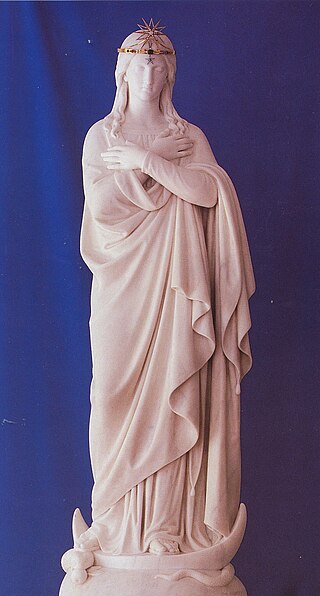
Congregation of the Sisters of the Immaculate Conception of the Blessed Virgin Mary are a female religious congregation di diritto pontificio: the members of this congregation add the initials CSIC to their name














